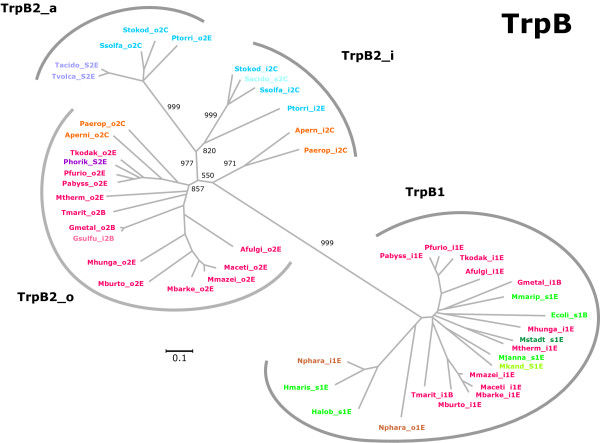Figure 1.

Phylogenetic tree of TrpB sequences. Using archeal and bacterial TrpB sequences, a multiple sequence alignment was generated and an unrooted phylogenetic tree was constructed. Proteins were labelled according to the naming scheme introduced in the Results section. Subtrees were marked according to the sequence type (TrpB1 or TrpB2). TrpB2 sequences span three subtrees; clustering is in agreement with the location of genes. TrpB2_o proteins are all encoded outside operons; 14 out of 16 originate from species that possess an operon-based trpB1 in addition. TrpB2_i proteins are encoded inside operons. Each of these genes is accompanied by a non operon-based trpB2. TrpB2_a sequences occur exclusively in genomes that have a single trpB2 gene or occur as a second trpB2 outside an operon in combination with a trpB2_i gene. The numbers are bootstrap values resulting from 1000 replications. Gene names are colour-coded. Blue colours indicate genes occurring in S2 (violet), s2 (light blue) and those i2_o2 species, which possess trpB2_a or trpB2_i genes (dark blue). Orange colours designate trpB2_i and trpB2_o genes. Red colours signify genes of i1_o2, S2, or s2 species, and green colours mark genes of s1 (light green) or S1 (dark green) species. The names of the two trpB1 copies occurring in N. pharaonis are printed in brown. For acronyms of species-types, see legend of Table 2. The length of the horizontal bar corresponds to 0.1 substitutions per site.
